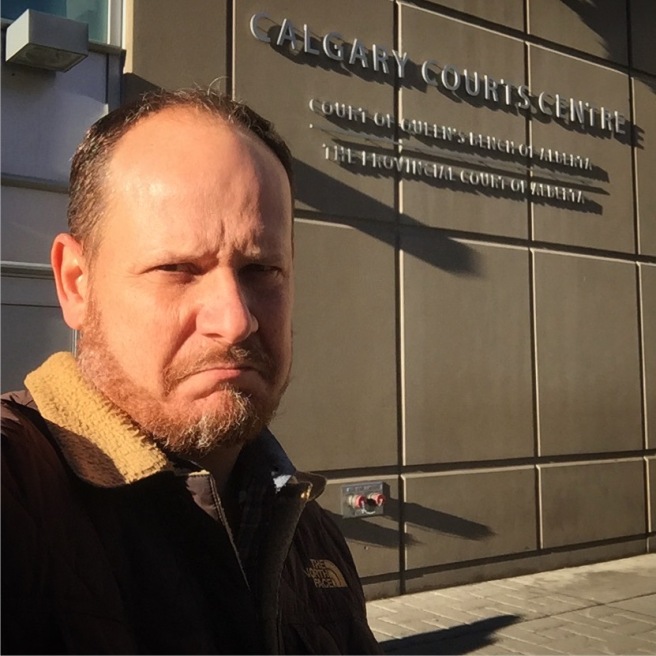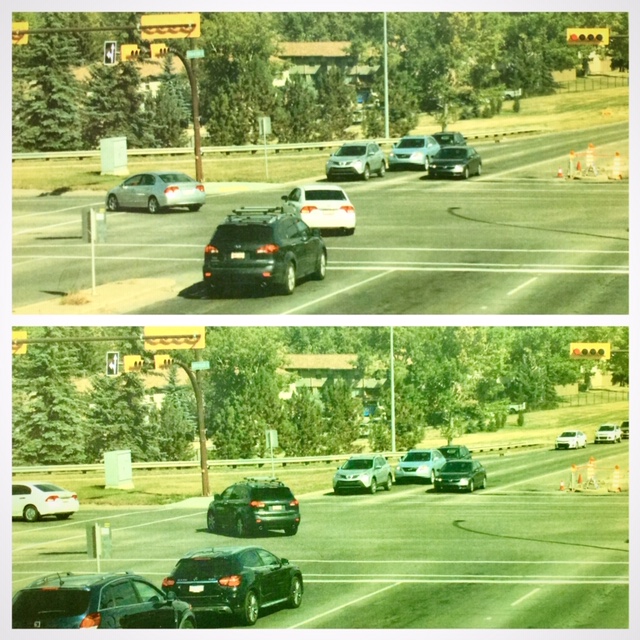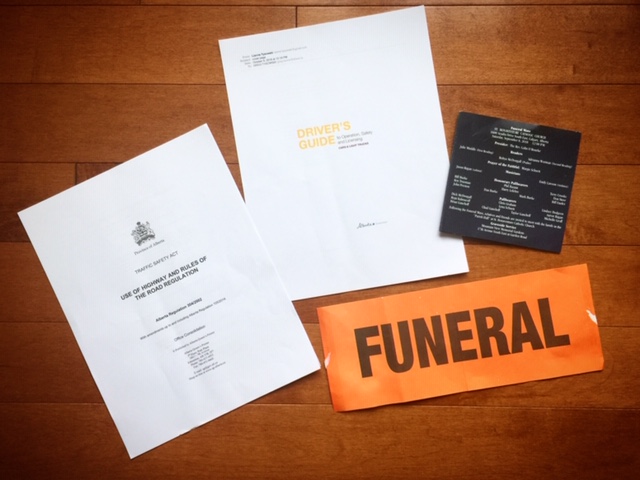
Until last week, I had never stepped foot in a court of law.
Thankfully, I never had any reason to step inside to vigorously defend myself against accusations of legal wrongdoing. That all changed when I received a letter from the city police a couple of months ago.
Mere seconds after anxiously tearing open the ominous letter, it didn’t look good. The photo evidence attached to the ticket looked pretty, pretty compelling. There was my car, plain as day, for the entire world to see, absolutely running a red light at a controlled intersection. There was no doubt about it.
There was also no doubt that my jaw almost hit the floor when I saw the fine on my ticket. It was almost FOUR HUNDRED DOLLARS! What? When did simple traffic fines turn into these insanely expensive, incredibly punitive punishments!
Full disclosure: I am no stranger to receiving photo radar tickets. I sheepishly admit that I have a heavy foot, so I always suck it up and pay the fine when I get that dreaded notification in the mail.
I never fight it. When I screw up, I simply pay up.
But something about this particular ticket seemed off… like WAY off. I wasn’t just running that red light; my vehicle was almost completely through the intersection when the damning picture was snapped.

Full disclosure: I’ve been known to “punch it” on a yellow to beat a red light.
But, the second photo attached to the ticket proved beyond the shadow of a doubt that the traffic light was ALREADY RED before I even entered the intersection. What was I thinking? I’m dumb, but I’m not that dumb! I showed the photo to Lianne and she knew right away what was going on.
“Remember, we were part of that funeral procession? That’s why we ran the light.”
Of course! Then it all came back to me.
We were smack dab in the middle of a twenty-car procession making our way from a church to a cemetery. The funeral home specifically instructed us it was perfectly legal to run red lights and to please stick together… and that’s exactly what I did. That’s why I didn’t hesitate to follow the car in front of me and keep on trucking when the green light changed to yellow, then ultimately red. Unfortunately, the driver behind me chickened out and did not keep the procession moving through the red light. I remember thinking: “I better not get a ticket because buddy behind me pulled the pin!”
But alas, I did get a ticket. But, this time I would not simply pay up. This time, I didn’t do anything wrong. This time, I was ready to fight.
This time, I was GOING TO COURT!
I mailed in my NOT GUILTY plea and a trial date was set for early December. Now, all I had to do was build my case. I had to convince a judge beyond the shadow of a doubt that I was indeed part of a funeral procession. The first thing I needed to do was establish a timeline. The traffic infraction in question happened at 2:55 PM, almost three hours after the start of the service. The incident occurred around the half way point of our drive to the burial. I had to locate the funeral card with the time, place and date of the church service and the interment at the cemetery. That card would establish credibility and validate my story.
Done.
My next task required me to sift through the garbage in my car to look for the bright orange FUNERAL windshield sticker they provided us. That wrinkled piece of scrap paper was actually crucial physical evidence for my case. Living in filth and never emptying out the trash from my Subaru finally paid off; as I triumphantly found the folded sticker tucked in with all of the other crumpled refuse.
Done and done.
I then had to research the Alberta Traffic Safety Act to find the relevant “use of highway and rules of the road regulations”.
Full disclosure: my lawyer wife actually secured that important information, and she didn’t even bill me for it!
The Act clearly states: “a person driving a vehicle in the funeral procession, may, during daytime hours, drive the vehicle into an intersection without stopping the vehicle if
(a) the vehicle’s headlamps are alight,
(b) the vehicle is travelling immediately behind the vehicle in front of it in the funeral procession so as to form a continuous line of traffic,
(c) the lead vehicle in the funeral procession is showing a purple flashing light, and
(d) the passage into the intersection can be made in safety.”
Done, done and done.
And, for good measure, Lianne also printed up the relevant portions of the Alberta Driver’s Guide for cars and light trucks. It outlined the correct procedures for operating a vehicle within a funeral procession; procedures I had followed to the letter.
Done, done, done and done!
I felt prepared. I felt pumped. I felt jazzed. I felt that I had an ironclad defence. Now, all I had to do was wait for my day in court.

The trial was set for a Friday afternoon at 2:00 PM. I was actually a bit nervous as I made my way into the courthouse, through the lengthy, airport-style security and up to the ninth floor courtroom. After checking in, I realized there were several other people also slotted to appear at 2:00 PM, so I was wondering how quickly my case would be heard.
As it turns out, it would be quite a while before I would face the judge. The very first case featured an ill-informed gentleman who argued that traffic light cameras are unconstitutional. What? Hasn’t this been settled law, like… forever? The visibly annoyed judge had to call for a recess to work on her decision. The recess was over half an hour, which was odd because when she came back out, all she did was basically tell the guy he was an idiot (although using much more pleasant terminology.)
After that, the cases ran by the judge fairly quickly. It’s amazing how many people show up to fight a traffic violation with zero evidence to support their case, only to change their plea to guilty and ultimately pay the fine.
But that wasn’t me! I had a great case! Remember, I had an ironclad defence!
After waiting for over ninety minutes, I was the last man standing in the courtroom.
It was just the Crown Prosecutor, the judge, the court clerk and me. When my case was called, I confidently made my way to the podium and quickly bowed. (I noticed other people bow to the judge, so I figured I better do the same.)
I had all of my paperwork organized neatly in a legal sized folder. All of the evidence I would need to win the trial of the century was in my hot, little hands. I was ready to defend myself in a court of law. I was ready for the legal fight of my life…
and that’s when it happened.
That’s when the Crown Prosecutor addressed the court and announced that all charges would be dropped because the police officer who issued the traffic ticket was not present and unable to testify at the trial.
Wait! WHAT?
I actually turned to the prosecutor and explained that I had a copy of the police officer’s signed affidavit and asked why that wasn’t enough? Why did the police officer have to physically be here if he had already sent a signed, sworn affidavit giving his testimony? Could we enter that into the record instead? I know this sounds crazy, but I was actually pleading with the court NOT to dismiss my case.
I was arguing against myself!
Damn it, I wanted this to go to trial. I wanted to be heard. I wanted to WIN. I wanted to give my expert testimony and have the judge look me square in the eye and render her verdict:
“NOT GUILTY!”
Then, I imagined the judge would make some witty remark about how I missed my calling and how I should have been a trial lawyer. I imagined winning my trial in dramatic fashion, with all kinds of courtroom theatrics. I was dying for a scrappy session that would force me to yell out:
“YOU CANT HANDLE THE TRUTH!
The truth… that I was in a funeral procession. By the way, I’m curious as to why can’t you handle this rather mundane information?”
Instead, my big day in court that started out with such promise simply fizzled out.
After “winning” my case, I meekly pulled out the bright orange funeral windshield sticker, held it up and informed the judge I was going to argue that I was part of a funeral procession. She just smiled at me and court was immediately adjourned.
I was hoping to hear her say: “Well good sir, that excellent defence would have totally won the case!” But, no… that didn’t happen either. The Crown Prosecutor, who was actually a very pleasant individual, offered to explain the ruling to me outside the courtroom after the session was over, but I declined his offer. I just wanted to go home.
To be fair, this was still the legal fight of my life, as it has been the ONLY legal fight of my life.
I FOUGHT THE LAW… and well, um… I guess… technically, I won?
(Full disclosure: I wasn’t THAT disappointed, as I did avoid paying a $400 fine.)


One more reason to live in Alberta.
There are no special privileges accorded to funeral processions under Ontario’s Highway Traffic Act. Should organizers wish for their procession to proceed uninterrupted by other traffic, stoplights or other yield situations, the common practice is to arrange a police escort (typically paid-duty). Police have the authority to direct traffic as required to keep a funeral procession together.
Unescorted funeral processions have no authority to go through stop signs or red lights without stopping, or otherwise assume they have the right of way.
In Ontario, funeral processions without police escort must follow all the usual rules of the road. If a procession vehicle goes through a red light and a crash results, Highway Traffic Act charges will apply.
If an officer waves procession traffic through an intersection, then leaves, the remainder of the procession should stop for a red light since the intersection would no be longer under the direct control of a police officer who has the lawful authority to override the usual traffic controls. Claiming to be obeying the directions of a police officer who is no longer physically present might be a hard sell in court.
LikeLike
I did not know this was the case in Ontario!
LikeLike